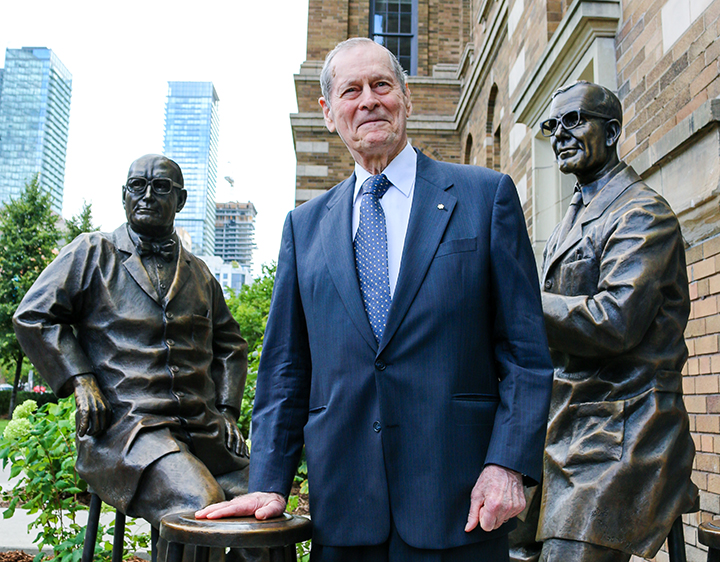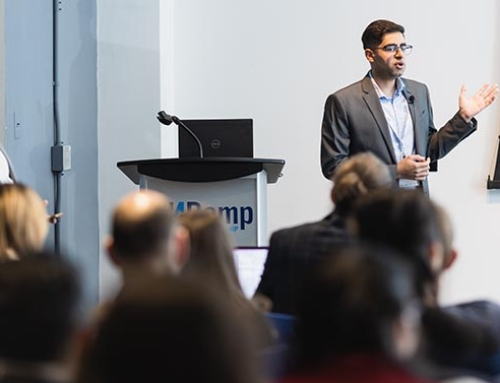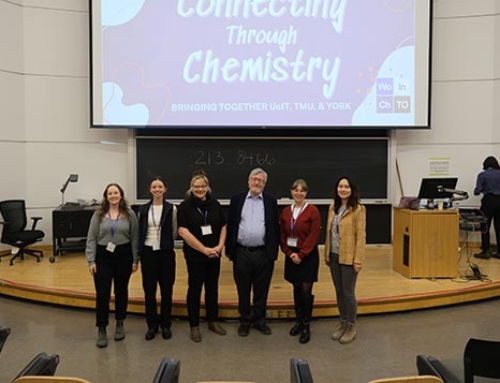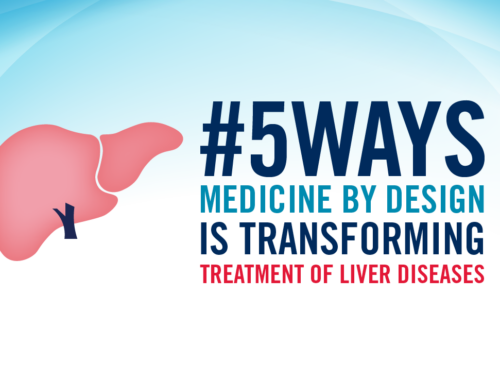
Biophysicist James Till in front of a new permanent sculpture commemorating his discovery of stem cells in the 1960s with collaborator Ernest McCulloch. The sculpture is on the north side of the MaRS building at College Street and University Avenue. (Photo by Jennifer Robinson)
With a prized view overlooking Queen’s Park, a trio of tiny bioreactors are quietly creating millions of stem cells – the building blocks of life and the foundation of some of the most promising medical treatments of the future.
Housed in the new Centre for Advanced Therapeutic Cell Technologies (CATCT) at MaRS, the bioreactors, which are used to feed and grow new cells, are the smallest of several located on site in the state-of-the-art lab. CATCT is seeking advanced manufacturing solutions to industrialize the cell manufacturing process to meet the needs of cell therapy companies around the globe.
The centre, funded by the federal government’s FedDev progam and GE Healthcare for $40 million, is integral to the operations of CCRM, a leader in developing and commercializing regenerative medicine technologies and cell and gene therapies.
CCRM and its 10th-floor neighbour Medicine by Design, a University of Toronto initiative, are at the heart of an emerging global regenerative medicine powerhouse populated by biotech startups, multinational corporations and hospital and university researchers clustered in Toronto’s Discovery District. The Ontario Institute for Regenerative Medicine is also housed here. It funds “disease teams” to move therapies to clinical trials.
All of that activity is why Toronto is quickly becoming known as “Stem Cell City,” said Vivek Goel, U of T’s vice-president of research and innovation, borrowing a term often used by Michael May, president and CEO of CCRM and a U of T alumnus.





